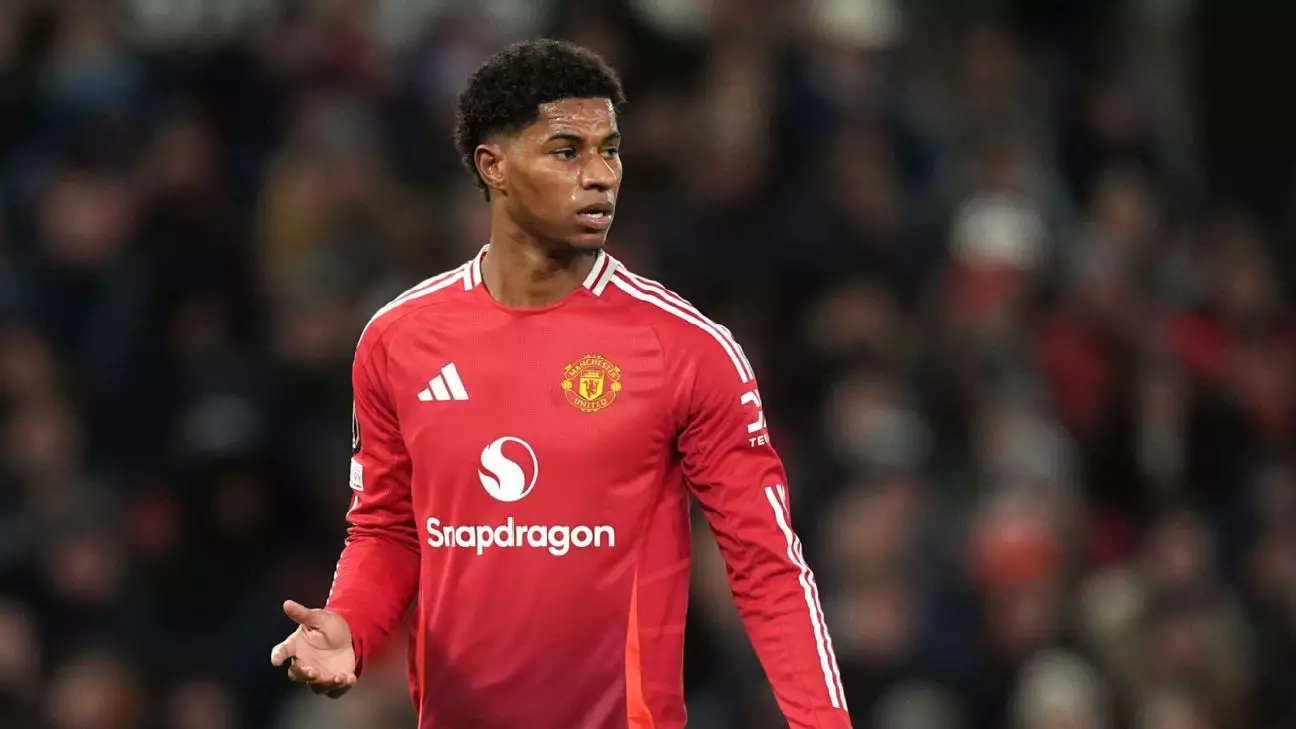In recent discussions swirling around elite European clubs, Marcus Rashford’s potential move from Manchester United to Barcelona emerges as one of the most pivotal shifts. Rashford, a symbol of United’s resilience and attacking prowess, may be soon donning the Blaugrana badge, signaling a seismic change in the landscape of top-tier football. This transfer isn’t just about a player changing clubs; it encapsulates a broader narrative—how ambition, financial maneuvering, and strategic planning intersect in modern football.
What makes Rashford’s potential departure so compelling is the complex negotiation process involved. Barcelona’s interest in taking him on loan initially, with an option to make the transfer permanent later, underscores their strategic intent to balance immediate squad enhancement with financial prudence. For Manchester United, the €48 million asking price represents a significant valuation, yet the possibility of a loan—especially with only two years remaining on Rashford’s contract—could lead to a deal that benefits both parties without immediate financial strain. Such negotiations reflect a forward-thinking approach by Barcelona: prioritize tactical flexibility and cost management in a transfer market driven by inflation and unpredictability.
This move also signifies Rashford’s rising international stature. Barcelona, a club with a storied history and relentless pursuit of excellence, recognizing his talent, reveals a shift in power dynamics among Europe’s top strikers. For Rashford, this could be a career-defining chapter, a chance to elevate his profile by competing in a league known for showcasing the world’s best talents. The transfer’s outcome holds broader implications—potentially inspiring other English players to consider continental moves and prompting Premier League clubs to rethink how they retain their rising stars amid escalating European interest.
Liverpool’s Calculated Gambit for a Future Defensive Anchor

While Rashford’s transfer story captures headlines, Liverpool’s pursuit of Crystal Palace’s Marc Guéhi deserves equal scrutiny. The Reds’ imminent offer of around £40 million—an assertive “take-it-or-leave-it” proposal—sends a clear message about their intent to fortify the defense. Guéhi, a talented 25-year-old center-back, exemplifies Liverpool’s strategic focus on building a resilient backline that can restore their former dominance.
However, this deal isn’t solely about the player’s capabilities; it reflects Liverpool’s broader tactical ambitions. The club recognizes the pressing need to integrate younger, dynamic defenders into their squad—particularly those capable of commanding a backline with authority and composure. Guéhi, who is currently in the final year of his contract, presents an appealing value proposition—an earnest attempt to lock in a high-potential player before other giants such as Arsenal, Chelsea, or Manchester United can swoop in.
The challenge, however, is whether Palace will accept Liverpool’s “take-it-or-leave-it” offer. The club’s valuation exceeds £40 million, but the fact that Guéhi desires a move to Anfield speaks volumes about Liverpool’s ambition and ability to appeal to young talent seeking a platform to flourish. If completed, this transfer could serve as a catalyst for Liverpool’s defensive reinvigoration, helping them bridge their competitive gap and challenge stronger rivals in the coming seasons.
Financial Power Plays: The Global Race for Football’s Young Elite

Beyond these high-profile moves, the transfer window reveals an intense battle among Europe’s giants to acquire youthful, highly-rated talents. Benjamin Sesko, a 22-year-old striker valued at over €90 million by RB Leipzig, epitomizes the high-stakes gamble clubs are willing to make. Clubs such as Al Hilal and Serie A sides are weighing offers amid the Saudi Pro League’s aggressive push into European markets, signaling a significant redistributive shift in global football power.
Sesko’s situation underscores a broader trend: clubs from outside the traditional powerhouses—armed with substantial financial backing—are disrupting established hierarchies. While Arsenal has shown disinterest, the Saudi outfit Al Hilal’s serious inquiries indicate a willingness to challenge the status quo. Such moves threaten the conventional model, where only European clubs with vast resources could land top young talents.
Similarly, other clubs are maneuvering to bolster their squads with strategic acquisitions. Manchester United’s active pursuit of Brentford’s Bryan Mbeumo exemplifies their attempt to add depth and flair to their attack. Meanwhile, Jadon Sancho’s anticipated move to Juventus highlights how star players are navigating their careers amid shifting club ambitions and contractual complexities. These transfers are not isolated incidents but parts of a larger chess game—each move with implications for competitive balance and the global football economy.
Strategic Swings and Player Power in a Turbulent Transfer Market
The ongoing transfer saga reveals more than just financial muscle; it underscores a shift in player agency and club strategy. Stars like Sancho seeking lucrative exit routes reflect a new era—one where individual ambitions increasingly influence club decisions. Meanwhile, clubs are recalibrating their strategies, targeting versatile prospects and experimenting with different recruitment models.
Interactions surrounding high-profile players—like Inter Milan’s consideration of Granit Xhaka or AC Milan’s interest in Melvin Bard—illustrate how clubs are rethinking their offensive and defensive calculus. The market is flooded with options, but the challenge remains to land the right talent at the right price.
In essence, the transfer window is less about simple player movements and more about power projection. Clubs want to signal their ambitions, leverage financial influence, and shape their future with strategic signings. Players, on their part, are often wielding more influence than ever, choosing clubs that align with their personal goals or market value. This dynamic creates a fiery, unpredictable market that will continue to redefine football’s competitive landscape in the years to come.


Leave a Reply